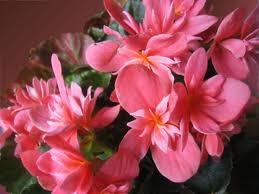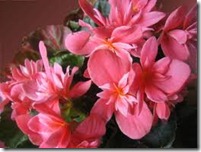More than 1,300 species of begonias (Begonia spp.) exist, all native to subtropical or tropical regions. The begonias most gardeners grow are perennials, plants that live for three or more years. Less commonly grown begonias are annuals—plants that complete their life cycles, from seed to reproduction, in one year.
Types
-
 Cane or "angel wing" begonias often display spotted foliage.
Cane or "angel wing" begonias often display spotted foliage.Begonias grown as houseplants are considered by horticulturists as "tender perennials," meaning they persist but are susceptible or tender to temperatures that reach or drop below 32 degrees Fahrenheit. Outdoors, wax/fibrous begonias are short-lived perennials and tuberous begonias are perennial but go dormant in winter and re-sprout in spring.
Most begonias are perennials, but a few, such as Begonia hirtella, are annuals and must be propagated annually from seed, according to Mark Tebbitt, the author of "Begonias."
Effects
-
 Rhizomatous begonias bloom in late winter and early spring in the tropics.
Rhizomatous begonias bloom in late winter and early spring in the tropics.Frost causes the fleshy, succulent leaves and stems of begonias to rupture and blacken. Depending on severity and duration of cold, a begonia will regrow from unharmed buds on lower stems or from the roots. Root tubers or rhizomes survive slightly lower temperatures because soil insulates them.
Misconceptions
-
Wax begonias are grown as disposable summer annuals.
Although many begonias are perennial, because they are used as seasonal bedding plants in summertime they are sometimes called annuals by gardeners. Fall frosts kill the plants. Without frost, these "annuals" would reveal their perennial nature.


Deprecated: strpos(): Passing null to parameter #1 ($haystack) of type string is deprecated in /home/agriviek8Qv/agriviet.net/public_html/wp-includes/comment-template.php on line 2522